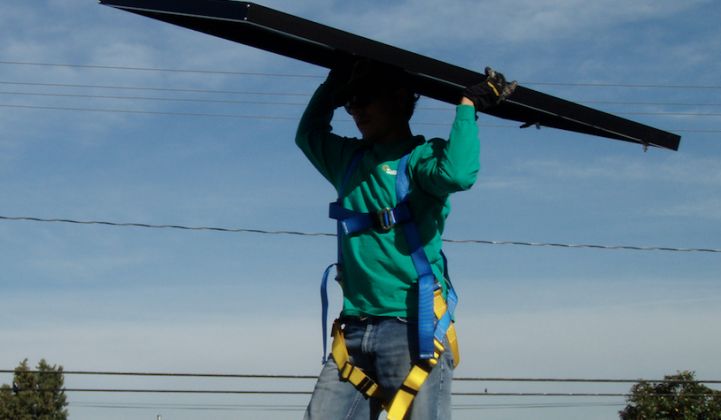Peter Rive, SolarCity's chief technical officer and co-founder, says that the company is preparing itself for the loss of the 30 percent federal tax credit.
"We’re planning for it to happen. The worst time to align the company around that reality is in 2017," said Rive, speaking at GTM's Solar Market Insight conference in San Diego on Tuesday.
If Congress does not act, the Investment Tax Credit will decline to 10 percent for residential solar leases and power-purchase agreements, and expire completely for cash-based systems in 2017.
On a third-quarter earnings call last week, SolarCity CEO Lyndon Rive detailed a plan to moderate growth and become cash-flow positive. The company lost $19.1 million -- 20 cents per share -- in the third quarter.
However, rather than reward the company for focusing on profitability, investors dumped the stock and sent share prices down by 22 percent in one day.
"Though we expect our deployments to grow in 2016, we are not targeting the same growth rates that have gotten us to our current scale going forward. Specifically, it is our goal to achieve positive cash flow by 2016 year-end and be in solid shape prior to the planned ITC expiration in 2017," wrote SolarCity in a letter to shareholders.
Peter Rive elaborated on the company's plan today, saying that customer-acquisition costs were too high to maintain a growth rate above 80 percent. SolarCity is targeting a 40 percent growth rate in 2016.
"We feel really good about installation costs. It's customer acquisition costs that we're really focusing on," he said.
While installation costs fell below $2 per watt last quarter, sales and administration costs have jumped by nearly 40 cents per watt since the third quarter of last year. Rive said that change was from continually bringing on new sales and support staff to handle large volumes of sales, thus lowering productivity. He also said high growth targets required pursuing more expensive sales channels.
Rive hinted at the difficulty of signing customers who may not already be thinking about buying PV. "I still think that explaining the benefits of solar hasn't been nailed very well," he said.
SolarCity's new plan will put the company short of signing 1 million customers by 2018. Investors with expectations for breakneck growth did not respond well to the changes, and the company's market cap has taken a big hit.
When asked what would happen if the ITC were to be extended past 2017, Rive said SolarCity would pick back up on its earlier targets, but with a strong focus on lowering sales costs: "If we get an extension, we will resume our traditional growth rate. What we learn in customer acquisition, we'll apply."
When asked about progress on manufacturing high-efficiency modules, Rive said that SolarCity is already deploying its own modules in small numbers from a 32-megawatt line in China and a 100-megawatt line in Fremont, California. He added that the company is on target to install equipment in its 1-gigawatt facility in Buffalo, New York by next year and get those production lines running by early 2017.
"It's really important to get Buffalo right. You have to make sure every single machine is set up perfectly," said Rive.
Listen to SolarCity CEO Lyndon Rive talk about the company's installation and manufacturing plans on the Energy Gang podcast from 2014:



